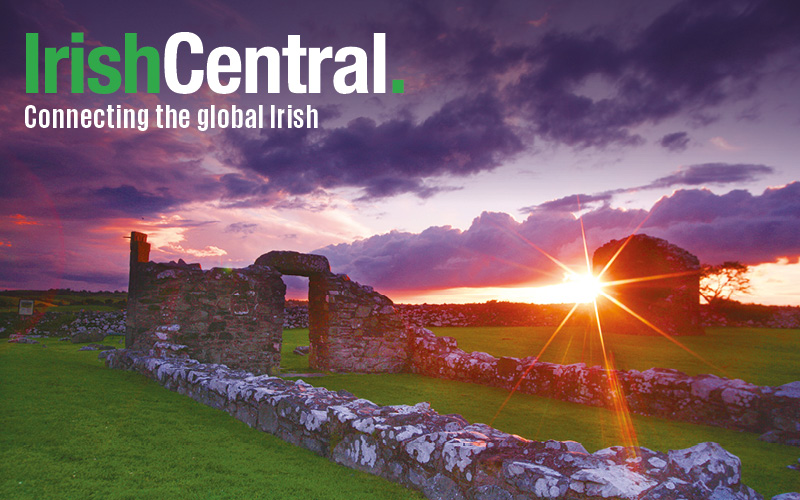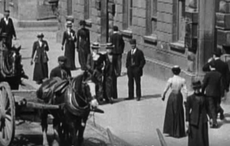I was driving through rural Galway recently, heading towards Gort, and I'd swear that the aging man walking quietly along the roadside as I passed with his head down was poor disgraced Bishop Eamon Casey. I thought to stop and go back and greet him, because we had been friendly when he was bishop of Galway, but decided instantly against it. He would see me as a pressman, as one of the pack who hounded him savagely in his falling years. I would not blame him for that, but would hate to see the protective shutters go up too. I kept going and the Bishop - if it was indeed him -diminished into a black dot in the misted mirror. But I said a good hearty prayer for him because he was a good man in his pomp, and I'm sure he is still a great man in his declining years. He now lives in his retirement in this local area near Gort. He is not in the headlines any more. He has been wiped off the Irish slate. The next headlines will be those marking his death and funeral. Looking back through the shards of all the awful clerical scandals that have shaken this island to its foundations since his dramatic fall from grace, one has to feel a powerful wave of sympathy and indeed empathy with Eamon Casey. He was a man of his people, whether in the diaspora in England, or later in Kerry, and in Galway. He was loved by his people and by the majority of his priests. I did an interview with him in Killarney when he was a fortnight away from coming up to Galway and saying his goodbyes to the Kerry clergy. They were coming and going when I was there, and I saw several times the rare sight of tears falling from priests' eyes. The leader who can inspire that sort of feeling is kinda special. He is never the kind of man who stands easily and remotely on the pedestals on which we Irish persisted in placing our clergy for so many centuries. He prefers to have his feet on the ground, to be of his people. Eamon Casey had that in spades. He confirmed my Dara and Ciara in their time and season in Barna Chapel. And he stayed around the chapel for hours being photographed with every child, chatting with the parents, totally at ease. And we all knew well that when he came to the parish for Confirmation there was said to be a special bottle of good malt in the parish priests' pantries. It did not make anyone feel any the less of him. The reverse was the case, especially in a full-blooded diocese coldly and remotely dominated for decades by the man we called Cross Michael Browne. After him Casey was a breath of fresh air. He liked his food. He liked his drink. He liked his fast cars, and he palpably liked his plain people. And we learned that he liked women as well, did we not, when the scandal broke. And, again after the later scandals, that was a hell of a lot more natural than about any of those shocking crimes. Eamon Casey did not abuse little boys and girls in the serial way that the pedophile priests who were exposed later did so foully for so long. A virile man fell for a beautiful woman and broke his vow of celibacy and fathered a child with her. And was brought crashing down from his pedestal by us and by the near-hypocrisy of his peers, some of whom were moving known pedophile clergy from parish to parish like poisoned pawns on a chessboard. That is a scandal which is still being investigated all those decades since Casey was disgraced, exiled, blackballed at all levels and, if my sources are accurate, effectively blocked from returning to Ireland for many years after his penance was well and truly served in the mission fields. Now he is quietly back amongst his own, and I would love to believe that he has at last found all the peace he deserves. The rest is history. Coincidentally, in relation to the pedophile priests, I had a good conversation with a wise countryman lately (I said I'd seen Eamon Casey) and, describing himself as "a wounded Catholic" who still practices, he had an interesting take on that situation. He put a lot of the blame for the situation on the great Catholic mothers of rural Ireland in a way that had some power to it. He said that in an era of large rural families and poor employment opportunities for the younger sons who would not inherit the land, the good mothers would quickly spot the sons who preferred to spend time with them in the kitchen, maybe helping with the baking and cooking than agricultural work out on the land with the fathers. Such lads, often called sissies in the macho culture, uninterested in hurling and football, not causing as much trouble as their siblings, were often actively encouraged by their powerful mothers towards a clerical vocation. Said my friend, "It was not the sons who got what used to be known as The Call - it was their mothers." His point was that this practice might have led to a far higher percentage of vulnerable boys entering the seminaries than would otherwise be the case. And this might have been a contributory factor to the sexual problems that developed later. It was an intriguing take on the subject anyway. Looking back at the dot in the car mirror, I saw again Bishop Eamon Casey of Galway charming a Pope in Ballybrit on a bright day with nearly a half-million spectators, charming a Pope and charming a whole youthful generation that were to lose him so soon afterwards. God mind him.




Comments